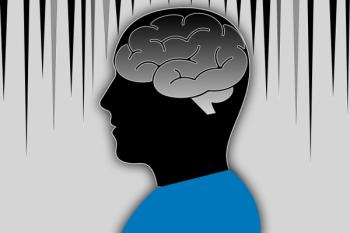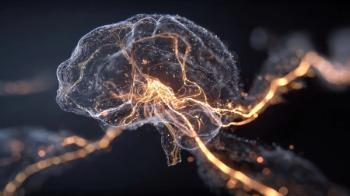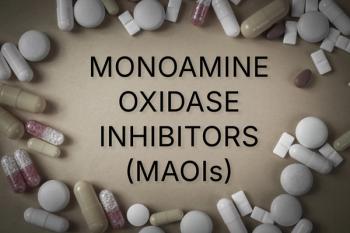
- Vol 38, Issue 5
- Volume 05
Different Strokes: How to Spot and Treat Poststroke Depression
Available evidence indicates that there are a multitude of neuropsychiatric syndromes that occur after a stroke. Cognitive impairment occurs in approximately one-third of patients. These neuropsychiatric manifestations often impede the recovery of motor functioning, reduce social functioning, and decrease the overall quality of life.
CATEGORY 1 CME
Premiere Date: May 20, 2021
Expiration Date: October 20, 2022
ACTIVITY GOAL
The goals for this activity are to understand the epidemiology and neurobiology of poststroke depression, to learn how to complete an appropriate assessment, and to be able to provide comprehensive treatment for these individuals.
Learning Objectives
1. To discuss the epidemiology of poststroke depression
2. To describe the risk factors for poststroke depression
3. To elaborate on the assessment of individuals with poststroke depression
4. To enumerate the treatments for poststroke depression
TARGET AUDIENCE
This continuing medical education (CME) activity is intended for psychiatrists, psychologists, primary care physicians, physician assistants, nurse practitioners, and other health care professionals who seek to improve their care for patients with mental health disorders.
ACCREDITATION/CREDIT DESIGNATION/FINANCIAL SUPPORT
This activity has been planned and implemented in accordance with the accreditation requirements and policies of the Accreditation Council for Continuing Medical Education (ACCME) through the joint providership Physicians’ Education Resource®, LLC and Psychiatric TimesTM. Physicians’ Education Resource®, LLC is accredited by the ACCME to provide continuing medical education for physicians.
Physicians’ Education Resource®, LLC designates this enduring material for a maximum of 1.5 AMA PRA Category 1 Credits™. Physicians should claim only the credit commensurate with the extent of their participation in the activity.
This activity is funded entirely by Physicians’ Education Resource®, LLC. No commercial support was received.
OFF-LABEL DISCLOSURE/DISCLAIMER
This CME activity may or may not discuss investigational, unapproved, or off-label use of drugs. Participants are advised to consult prescribing information for any products discussed. The information provided in this CME activity is for continuing medical education purposes only and is not meant to substitute for the independent clinical judgment of a physician relative to diagnostic or treatment options for a specific patient’s medical condition.
The opinions expressed in the content are solely those of the individual faculty members and do not reflect those of Physicians’ Education Resource®, LLC.
FACULTY, STAFF, AND PLANNERS’ DISCLOSURES
Neither the authors, the peer reviewer, nor the staff members of Physicians’ Education Resource®, LLC and Psychiatric TimesTM have relevant financial relationships with commercial interests.
For content-related questions, email us at
HOW TO CLAIM CREDIT
Once you have read the article, please use the following URL to evaluate and request credit:
It is estimated that in the United States alone, approximately 795,000 individuals have a stroke annually. The prevalence of stroke is greater among men than women, but the stroke incidence doubles among postmenopausal women. Furthermore,
Available evidence indicates that there are a multitude of neuropsychiatric syndromes that occur after a stroke (
Epidemiology
A recent meta-analysis found that the prevalence of any depressive disorder post stroke is approximately 33.5%.6 In this study, the point prevalence of major depression was 17.7% with the prevalence for minor depression being 13.1%. Prevalence of dysthymia and adjustment disorder was 3.1% and 6.9%, respectively. An earlier meta-analysis found that the frequency of poststroke depression was approximately 31%.7 The proportion of those with depression between 1 and 5 years after stroke was 25%, and the proportion of those with depression at 5 years after stroke was 23%.
In the DSM-5, poststroke depression (PSD) is classified under the criteria for “
PSD symptoms can be further subclassified as presenting with (1) depressive features when all criteria for a major depressive episode are not met, (2) a major depressive-like episode when the criteria for a major depressive episode are met, and (3) mixed features when symptoms of mania or hypomania are also present but do not predominate in the clinical presentation.
PSD phenomenology is similar to, but not the same as, that described by other individuals with depression.9 For example, individuals with PSD are less likely to report “inability to feel” or “disturbed sleep.” In addition, individuals with PSD may be less likely to report anhedonia and apathy when compared with other individuals who have
A recent meta-analysis by Shi et al indicated that a history of mental illness (depression/anxiety) was the highest-ranking risk factor for PSD (odds ratio [OR] 2.93).11 Other risk factors for PSD were family history of mental illness (OR = 1.95), age (< 70 years, OR = 1.94), female sex (OR = 1.77), level of handicap (OR = 1.52), severity of stroke (OR = 1.12), and neuroticism (OR = 1.08). The investigators also found that education (> 8 years) and social support (OR = 0.93) were protective factors for PSD. Brain damage in the left frontal lobe and left basal ganglia was associated with PSD, and specified levels (< 10.2 ng/ml) of brain-derived neurotrophic factor and leptin (> 20.7 ng/ml) were risk factors for PSD. Biochemical factors, including interleukin-1b (IL-1b) and intercellular cell adhesion molecule-1 (ICAM-1), hypertension,
Consequences
In a prospective observational study of individuals who were post stroke and in the emergency department or admitted to acute care in designated stroke centers, individuals with PSD had more severe strokes, greater functional handicap, and longer hospital stays and were less likely to be discharged home following acute hospitalization (all P < .001) than patients without PSD.12 One systematic review indicated that individuals with PSD tend to experience a moderate increase in the risk of poor functional outcome (OR = 2.16) when compared with stroke patients without depression.13 This association did not seem to be caused by poor rehabilitation and functional improvement among individuals with PSD.
Pathogenesis
The pathogenesis of PSD involves complex interactions between neuroanatomical and neurochemical factors.16 It is thought that the processes involved in development of PSD include reduced levels of monoamines, abnormal neurotrophic response to the occurrence of stroke, increased
Assessment
Although fairly common, PSD is often underdiagnosed.19 Differential diagnosis is difficult, as many of these individuals who are post stroke may present with cognitive impairment and may not be able to report their symptoms accurately (
In one study, PSD was diagnosed in only 4.8% of the patients, and only 6.7% of these individuals were treated with a new antidepressant.12 However, compared with patients admitted to standard units, individuals admitted to specialized stroke units were more likely to be diagnosed with depression (5.2% vs 4.0%, P < .014) and were more likely to receive a new prescription for an antidepressant (7.8% vs 4.5%, P < .001). These results indicate that there should be routine screening post stroke for PSD. Additionally, specialized stroke unit care may improve the detection and treatment of PSD.
A number of tools may be helpful in identifying PSD. One meta-analysis found that the Center of Epidemiological Studies-Depression Scale (CES-D) (sensitivity, 0.75 and specificity, 0.88), the Hamilton Depression Rating Scale (HDRS) (sensitivity, 0.84 and specificity, 0.83), and the Patient Health Questionnaire (PHQ)-9 (sensitivity, 0.86 and specificity, 0.79) were optimal screening tools.21 The PHQ-2 performed less well than other measures. However, the investigators found that the clinical utility of these tools was modest for case-finding. They cautioned that these screening tools should not be used in
Prevention
A meta-analysis by Hackett et al evaluated interventions for preventing PSD. The investigators included data from 10 pharmaceutical trials (12 comparisons) and 4 psychotherapy trials. 22 Most of the participants were recruited within 1 month of acute stroke, and the duration of treatment ranged from 2 weeks to 1 year. The proportion of participants meeting the study criteria for depression was lower in the antidepressant‐treated group; however, meta‐analysis was not performed, as the study methods and end point measured varied among studies. There was no evidence of benefit of
In a meta-analysis that included data from 10 randomized placebo-controlled trials (RCTs) that evaluated the prophylactic effects of antidepressants in nondepressed individuals with stroke to prevent PSD, Chen et al found the pooled occurrence rates of newly developed PSD cases in the intervention and control groups were 12.54% (41 of 327 participants) and 29.17% (91 of 312 participants), respectively.23 Both
In a recent meta-analysis, Gu et al included data from 12 studies that evaluated the use of prophylactic antidepressants to prevent the occurrence of PSD.24 The investigators found antidepressants following acute stroke reduced PSD incidence (relative risk [RR] = 0.33, P < .001). There were no differences detected in efficacy noted between the SSRIs, TCAs, and serotonin norepinephrine reuptake inhibitors (SNRIs) in the subgroup analysis. When compared with the control group, the RR of PSD recurrence during the follow-up period in the treatment group was 0.51 (P < .001). The pooled mean difference in reduction of depression severity on the HDRS between the antidepressant and control groups was 5.73 (P < .001). Additionally, there were improvements in the motor function (weighted mean difference [WMD] = 12.56, P < .001) and neurological function (WMD = 1.13, P < .001) between the antidepressant and the control groups. There were no differences between the 2 groups with regard to mortality rates (RR = 1.63, P = .377) or incidence of adverse events (RR = 0.93, P = .806).24
Treatments
In a cross-sectional study of data from the National Ambulatory Medical Care Survey and its outpatient department, Bhattacharjee and colleagues found that only 47.32% of the participants with PSD received treatment, which was mainly driven by the use of antidepressant alone. In this study, men were approximately 3 times more likely to receive depression treatment compared with women.25 Additionally, individuals who were Caucasian were almost 4 times more likely to receive depression treatment compared with other races or ethnicities. This study also found that an increase in number of chronic diseases was associated with a lower likelihood of receiving any
In a meta-analysis of 28 RCTs that evaluated cognitive behavioral therapy (CBT) for PSD, the investigators found that CBT had positive effects on PSD when compared with control groups (P < .001).26 Both CBT alone (P = .001) and CBT in combination with antidepressants (P < .00001) improved depressive symptoms in PSD. CBT resulted in significantly higher remission rates (P < .00001) and response rates (P < .00001), improving anxiety, neurological functional deficits, and ADL. Data from 8 studies showed no significant relationship between CBT effects and the mean duration after stroke (P > .05).
In a network meta-analysis of 23 RCTs that evaluated 9 PSD treatment interventions, the investigators found that SNRIs were associated with the highest reduction in the depression scores, followed by TCAs, psychotherapy plus antidepressant, and SSRI antidepressants.27 In a second network meta-analysis, the investigators included data from 15 RCTs in which 13 antidepressant drugs were considered.28 The investigators found that for efficacy, paroxetine was ranked the best antidepressant for reduction in depression scores at the end of treatment, followed by imipramine, reboxetine, nortriptyline, citalopram, and fluoxetine. They also found that duloxetine ranked the best for the reduction in depression scores at durations of 4 weeks and 8 weeks. For tolerability, paroxetine was ranked the best, but there was no significant difference noted between any of the comparisons. In a third network meta-analysis of 14 RCTs with 9 different antidepressant treatments, the investigators found that doxepin, paroxetine, and nortriptyline were significantly more effective than placebo (standardized mean differences: -1.93, -1.39, and -1.25, respectively) in the treatment of PSD.29
In a study that evaluated transcranial direct current stimulation (tDCS) for PSD, the investigators randomized 48 antidepressant-free individuals with PSD into 2 groups: active and sham tDCS.30 Participants received twelve 30-minute sessions of left/cathodal right dorsolateral prefrontal tDCS over a 6-week period: once daily on weekdays for 2 weeks, then 1 session every other week. The primary outcome was a change in the 17-item HDRS at 6 weeks. The investigators found that active tDCS was superior to sham at the end point (P < .001). The response and remission rates were also significantly higher in the active treatment group (37.5% and 20.8%, respectively) when compared with the sham treatment group (4.1% and 0%, respectively). The number-needed-to-treat for response and remission were 3 and 5, respectively. There were no changes in cognitive performance due to tDCS, and the frequency of adverse events was not significantly different between the active and sham groups at all time points. Additionally, no serious adverse events were reported.30 The investigators did not identify any potential predictors of response including depression onset after stroke, duration of the
A systematic review and meta-analysis of 22 RCTs evaluated the effect of
Concluding Thoughts
PSD is a common sequela of stroke. The pathogenesis of PSD involves complex interactions between both neuroanatomical and neurochemical factors. PSD is associated with more severe strokes, greater functional handicap, longer hospital stays, lower likelihood of discharge to home following acute hospitalization, and a greater risk for mortality. Common risk factors for PSD include a history of mental illness (depression/anxiety), a family history of mental illness, age (< 70 years), female sex, level of handicap, severity of stroke, and neuroticism.
Although fairly common, PSD often remains underrecognized and poorly treated. Available evidence indicates efficacy of both nonpharmacological and pharmacological treatment strategies for the prevention of PSD. Early identification and appropriate management of PSD will reduce the morbidity and mortality due to this condition. Future research should investigate the pathophysiological underpinnings of PSD, so that more effective preventative and treatment strategies can be developed.
Dr Tampi is professor and chairman, Department of Psychiatry & Behavioral Sciences, Cleveland Clinic Akron General and Chief, Section for Geriatric Psychiatry, Department of Psychiatry and Psychology, Cleveland Clinic. Dr George is a research coordinator, Department of Research at Cleveland Clinic Akron General and clinical assistant professor of Obstetrics and Gynecology, Northeast Ohio Medical University.
References
1. Murray CJ, Vos T, Lozano R, et al. Disability-adjusted life years (DALYs) for 291 diseases and injuries in 21 regions, 1990-2010: a systematic analysis for the Global Burden of Disease Study 2010. Lancet. 2012;380(9859):2197-2223.
2. Feigin VL, Vos T, Alahdab F, et al; GBD 2017 US Neurological Disorders Collaborators. Burden of neurological disorders across the US from 1990-2017: a global burden of disease study. JAMA Neurol. 2021;78(2):165-176.
3. Crichton SL, Bray BD, McKevitt C, Rudd AG, Wolfe CD. Patient outcomes up to 15 years after stroke: survival, disability, quality of life, cognition and mental health. J Neurol Neurosurg Psychiatry. 2016;87(10):1091-1098.
4. Chemerinski E, Robinson RG. The neuropsychiatry of stroke. Psychosomatics. 2000;41(1):5-14.
5. Obaid M, Douiri A, Flach C, et al. Can we prevent poststroke cognitive impairment? An umbrella review of risk factors and treatments. BMJ Open. 2020;10(9):e037982.
6. Mitchell AJ, Sheth B, Gill J, et al. Prevalence and predictors of post-stroke mood disorders: a meta-analysis and meta-regression of depression, anxiety and adjustment disorder. Gen Hosp Psychiatry. 2017;47:48-60.
7. Hackett ML, Pickles K. Part I: frequency of depression after stroke: an updated systematic review and meta-analysis of observational studies. Int J Stroke. 2014;9(8):1017-1025.
8. Depressive disorder due to another medical condition. DSM Library. Psychiatry Online. Accessed March 5, 2021.
9. Cumming TB, Churilov L, Skoog I, et al. Little evidence for different phenomenology in poststroke depression. Acta Psychiatr Scand. 2010;121(6):424-430.
10. de Man-van Ginkel JM, Hafsteinsdóttir TB, Lindeman E, et al. Clinical manifestation of depression after stroke: is it different from depression in other patient populations? PLoS One. 2015;10(12):e0144450.
11. Shi Y, Yang D, Zeng Y, Wu W. Risk factors for post-stroke depression: a meta-analysis. Front Aging Neurosci. 2017;9:218.
12. Herrmann N, Seitz D, Fischer H, et al. Detection and treatment of post stroke depression: results from the registry of the Canadian stroke network. Int J Geriatr Psychiatry. 2011;26(11):1195-1200.
13. Blöchl M, Meissner S, Nestler S. Does depression after stroke negatively influence physical disability? a systematic review and meta-analysis of longitudinal studies. J Affect Disord. 2019;247:45-56.
14. Bartoli F, Pompili M, Lillia N, et al. Rates and correlates of suicidal ideation among stroke survivors: a meta-analysis. J Neurol Neurosurg Psychiatry. 2017;88(6):498-504.
15. Cai W, Mueller C, Li YJ, et al. Post stroke depression and risk of stroke recurrence and mortality: a systematic review and meta-analysis. Ageing Res Rev. 2019;50:102-109.
16. Feng C, Fang M, Liu XY. The neurobiological pathogenesis of poststroke depression. ScientificWorldJournal. 2014;2014:521349.
17. Loubinoux I, Kronenberg G, Endres M, et al. Post-stroke depression: mechanisms, translation and therapy. J Cell Mol Med. 2012;16(9):1961-1969.
18. Villa RF, Ferrari F, Moretti A. Post-stroke depression: mechanisms and pharmacological treatment. Pharmacol Ther. 2018;184:131-144.
19. Espárrago Llorca G, Castilla-Guerra L, Fernández Moreno MC, et al. Post-stroke depression: an update. Neurologia. 2015;30(1):23-31.
20. Medeiros GC, Roy D, Kontos N, Beach SR. Post-stroke depression: a 2020 updated review. Gen Hosp Psychiatry. 2020;66:70-80.
21. Meader N, Moe-Byrne T, Llewellyn A, Mitchell AJ. Screening for poststroke major depression: a meta-analysis of diagnostic validity studies. J Neurol Neurosurg Psychiatry. 2014;85(2):198-206.
22. Hackett ML, Anderson CS, House A, Halteh C. Interventions for preventing depression after stroke. Cochrane Database Syst Rev. 2008;(3):CD003689.
23. Chen Y, Patel NC, Guo JJ, Zhan S. Antidepressant prophylaxis for poststroke depression: a meta-analysis. Int Clin Psychopharmacol. 2007;22(3):159-166.
24. Gu J, Huang H, Chen K, et al. Are they necessary? preventive therapies for post-stroke depression: a meta-analysis of RCTs. Psychiatry Res. 2020;284:112670.
25. Bhattacharjee S, Axon DR, Goldstone L, Lee JK. Patterns and predictors of depression treatment among stroke survivors with depression in ambulatory settings in the United States. J Stroke Cerebrovasc Dis. 2018;27(3):563-567.
26. Wang SB, Wang YY, Zhang QE, et al. Cognitive behavioral therapy for post-stroke depression: a meta-analysis. J Affect Disord. 2018;235:589-596.
27. Deng L, Sun X, Qiu S, et al. Interventions for management of post-stroke depression: a Bayesian network meta-analysis of 23 randomized controlled trials. Sci Rep. 2017;7(1):16466.
28. Deng L, Qiu S, Yang Y, et al. Efficacy and tolerability of pharmacotherapy for post-stroke depression: a network meta-analysis. Oncotarget. 2018;9(34):23718-23728.
29. Qin B, Chen H, Gao W, et al. Efficacy, acceptability, and tolerability of antidepressant treatments for patients with post-stroke depression: a network meta-analysis. Braz J Med Biol Res. 2018;51(7):e7218.
30. Valiengo LC, Goulart AC, de Oliveira JF, et al. Transcranial direct current stimulation for the treatment of post-stroke depression: results from a randomised, sham-controlled, double-blinded trial. J Neurol Neurosurg Psychiatry. 2017;88(2):170-175.
31. Shen X, Liu M, Cheng Y, et al. Repetitive transcranial magnetic stimulation for the treatment of post-stroke depression: a systematic review and meta-analysis of randomized controlled clinical trials. J Affect Disord. 2017;211:65-74. ❒
Articles in this issue
over 4 years ago
On Becoming a PMHNPover 4 years ago
Partnering for the Greater Goodover 4 years ago
Reflecting on Psychiatry’s Role in Religionover 4 years ago
Special Considerations for SGM Youth Onlineover 4 years ago
What Constitutes an SGM Community?over 4 years ago
The Mental Health of SGM Youth: Embracing Affirmationover 4 years ago
Medical Liability Costs Are on the Riseover 4 years ago
Tips for Lithium Dosing for Optimal Renal SafetyNewsletter
Receive trusted psychiatric news, expert analysis, and clinical insights — subscribe today to support your practice and your patients.













